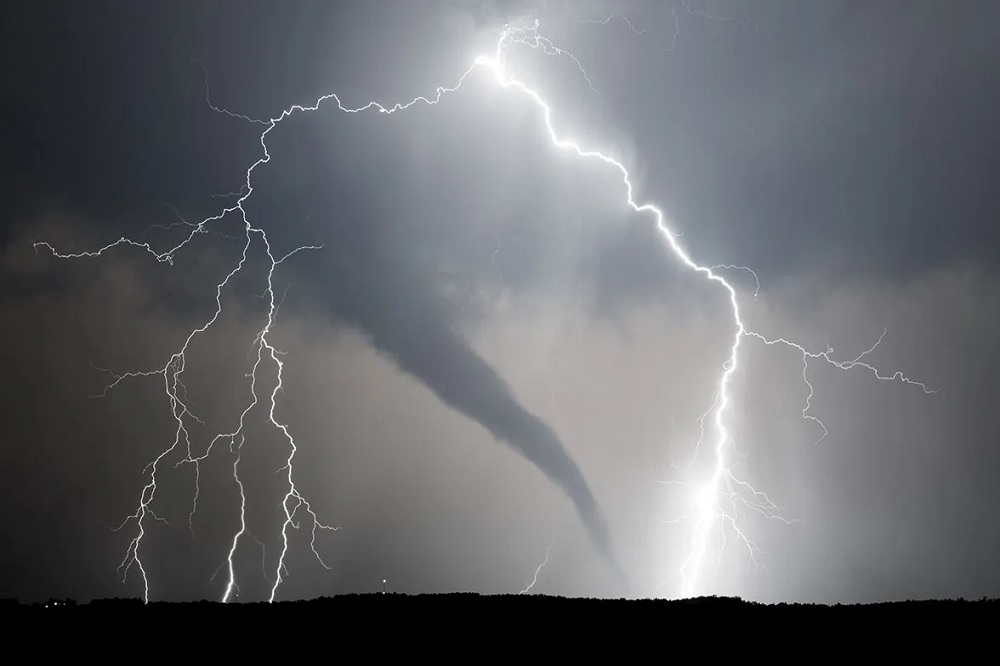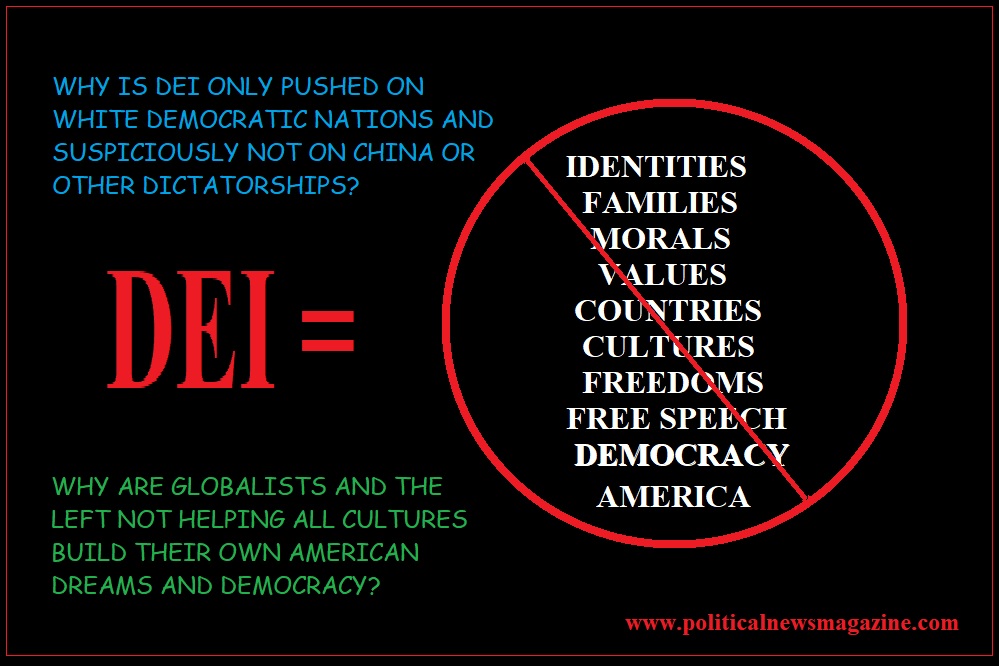Weather manipulation is no longer confined to the realm of conspiracy theories; it is a documented reality with historical roots, modern applications, and global implications. From controlling rain patterns to influencing hurricanes and tornadoes, several governments and private entities have developed technologies to manipulate the atmosphere. This article delves into the history, patents, and controversies surrounding weather control, exploring whether globalists are using these technologies for political and economic gain.
The Origins of Weather Manipulation Technology
Weather manipulation efforts date back to the mid-20th century. Early projects like Project Cirrus (1947-1952), conducted by the United States Air Force and General Electric, experimented with cloud seeding using silver iodide to influence hurricanes. Although the outcomes were mixed, the project laid the foundation for future weather manipulation technologies, demonstrating the potential of these methods(RAND).
The U.S. government continued its research with Project Stormfury, which aimed to weaken hurricanes by seeding their eyewalls. Despite the program’s end in the 1980s due to inconsistent results, it showcased that manipulating storm patterns was a serious pursuit among military and government agencies(AFP Fact Check)(RAND).
China’s Weather Modification Programs
China is at the forefront of weather modification today, utilizing sophisticated techniques such as cloud seeding through its Beijing Weather Modification Office. This organization, under China’s national weather control program, manages precipitation for agricultural, pollution control, and event management purposes. For instance, during the 2008 Beijing Olympics, Chinese officials ensured clear skies by preemptively seeding clouds to trigger rain before events. By doing so, they removed moisture from the atmosphere, preventing precipitation over the city during critical moments(livescience.com).
China’s ambitions go further: the country aims to increase rainfall in arid regions by up to 30% annually using advanced cloud manipulation techniques. These efforts show a high level of control over weather patterns, underscoring the nation’s focus on utilizing weather modification as a tool for both environmental and geopolitical gains(Media Matters).
The Science of Steering and Intensifying Storms
The ability to steer and intensify hurricanes and tornadoes hinges on manipulating moisture levels and atmospheric pressure. Hurricanes, for example, gain strength from warm ocean waters and atmospheric moisture. By increasing moisture in specific areas or creating artificial pressure systems, it is possible to influence a hurricane’s path, drawing it into these areas naturally. Similarly, manipulating wind patterns and temperatures can guide the trajectory and intensity of hurricanes(NASA Science).
Tornadoes, which rely on supercell thunderstorms, can also be influenced by adjusting moisture and pressure conditions. Tornadoes form when warm, moist air meets cool, dry air, creating instability that leads to rotating updrafts (mesocyclones). By increasing atmospheric moisture or pressure, conditions can be altered to either intensify tornadoes or steer them into desired pathways(AIP Publishing)(NOAA National Severe Storms Laboratory).
Patents and Technologies in Weather Modification
Various patents document the methods and technologies for weather control:
- Cloud Seeding: The most common technique involves dispersing silver iodide into clouds to induce rain or snow. Aircraft and drones release these particles to modify precipitation levels in targeted areas(RAND).
- Storm Intensification and Direction Control: Patents explore manipulating thermal energy and pressure zones to direct and intensify hurricanes and tornadoes. By adjusting the pressure dynamics, it is possible to influence where these storms move and their intensity(livescience.com)(AOML).
- Geoengineering and Sunlight Reflection: Some proposals even suggest using satellite technology to reflect sunlight away from Earth, cooling the atmosphere and potentially impacting weather patterns. These geoengineering methods highlight the extent of technological efforts aimed at controlling the climate(Northrop Grumman).
Floods and Droughts: Manipulating Precipitation Patterns
Floods and droughts can be created and controlled using weather manipulation techniques:
- Flood Creation: Increasing rainfall in specific areas through cloud seeding can overwhelm watersheds, causing floods. By altering atmospheric conditions such as temperature and moisture levels, the intensity and location of rainfall events can be controlled, leading to strategic flooding(NASA Science).
- Drought Induction: Conversely, preventing cloud formation or diverting moisture away from regions can induce droughts. By creating artificial high-pressure systems, it is possible to keep moisture from reaching certain areas, resulting in prolonged dry spells. Countries like Israel and Iran have accused each other of using cloud seeding technology to manipulate precipitation, demonstrating that weather control is not just theoretical but actively employed for strategic purposes(National Geographic Society).
The Controversial North Carolina Lithium Case
North Carolina’s Carolina Tin-Spodumene Belt contains valuable lithium reserves critical for battery production. Speculation has emerged that hurricanes like Helene, which flooded areas rich in lithium, were geoengineered to clear land for resource exploitation. Despite expert claims that current technology cannot manipulate hurricanes on such a large scale, the presence of weather manipulation patents and documented projects provides a basis for these suspicions(Media Matters).
Large corporations like BlackRock and Vanguard, which hold shares in lithium mining companies, have been accused of benefiting from these disasters. While mainstream experts argue that these claims are speculative, the strategic importance of these resources and the use of weather manipulation technology cannot be dismissed entirely(Media Matters)(Northrop Grumman).
Geopolitical Implications and Global Use of Weather Manipulation
The use of weather control technology extends beyond the United States and China. Countries like Russia have experimented with geoengineering methods to combat droughts and influence atmospheric conditions. According to the RAND Corporation, as these technologies mature, they may become tools for influencing resources, agriculture, and even population movements, presenting significant geopolitical risks(RAND)(NASA Science).
International treaties like the 1976 Environmental Modification Convention prohibit using weather manipulation as a weapon, but these agreements are outdated. The lack of a comprehensive regulatory framework means that countries or private entities could use these technologies unchecked, potentially destabilizing regions through floods, droughts, or intensified storms(NASA Science).
Conclusion: The Need for Oversight and Transparency
The advancement of weather manipulation technology poses significant opportunities and dangers. While these technologies can address water scarcity and agricultural needs, they also hold the potential for misuse. The capacity to create floods, droughts, hurricanes, and tornadoes is not merely speculative; evidence suggests that such manipulation is being researched and, in some cases, applied.
For global stability, it is crucial that international bodies establish transparent frameworks and monitoring mechanisms to ensure these technologies are used responsibly. Without oversight, the risks of weaponizing weather for economic or geopolitical advantage remain high, potentially threatening communities and nations.



